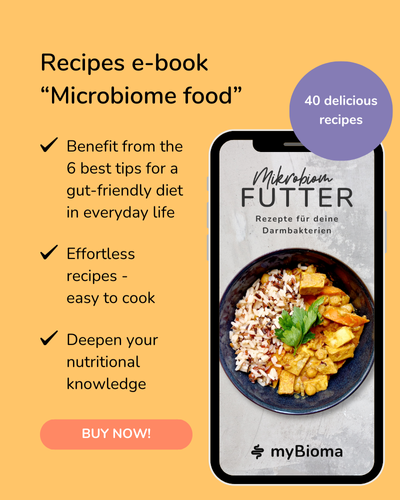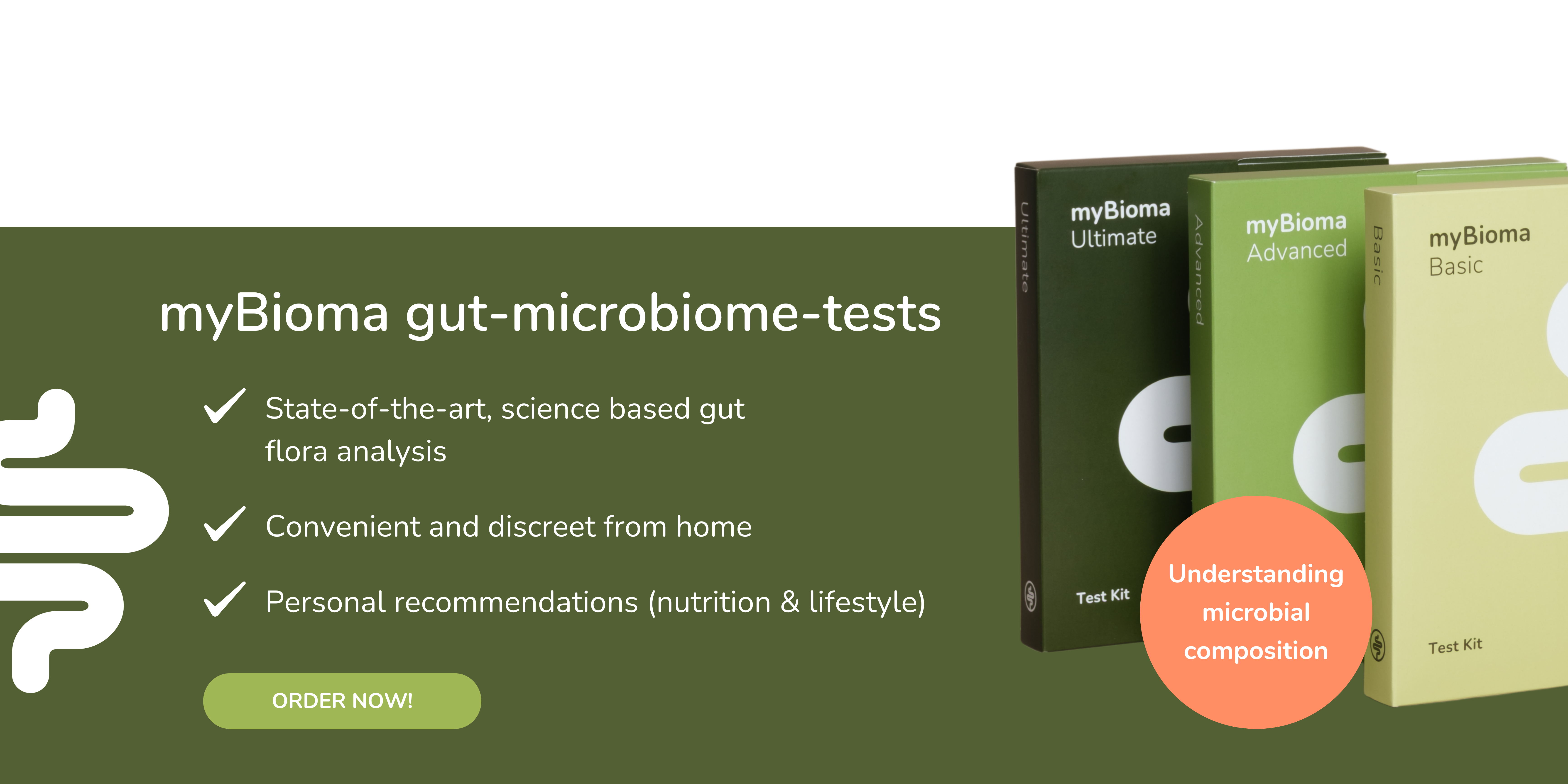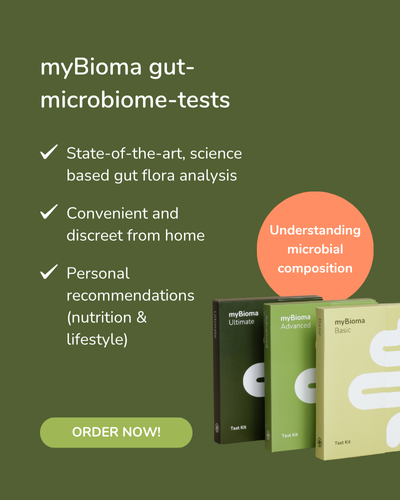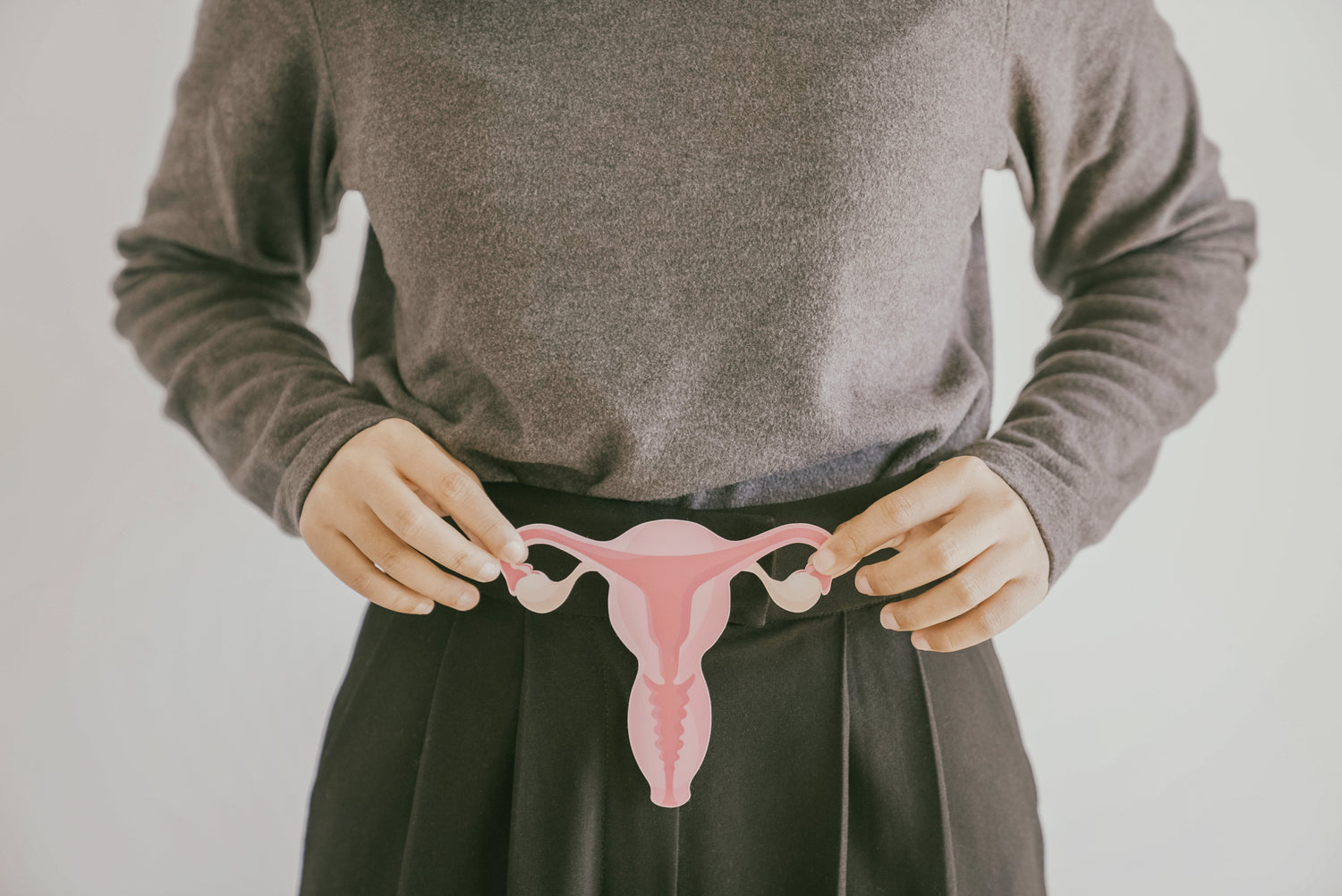Annemarie Ott has already been working as a dietician for 20 years, with one of her main focuses being the support of overweight people. She knows about the particular challenges and difficulties that those affected face – but also about the possibilities and bright spots of nutrition. Especially the findings of the latest research in the context of gut health are extremely exciting in this regard and it is worth taking a closer look at them. Small changes in eating habits can not only have a positive influence on (intestinal) health and numerous diseases, but also support weight loss. Are you ready for a knowledge morsel for your belly?
The gut-healthy diet
First of all, a brief summary of what this means: A gut-friendly diet includes a variety of different plant-based foods, fiber, fermented (dairy) products and polyphenol-rich foods and can maintain, build and support healthy gut flora. But more on this in the course of the article.
The superorgan gut microbiome
By now, word has spread that our gut is not only responsible for digestion, but that this remarkable organ, or more precisely, all the communities within it – the gut microbiome – have an influence on numerous metabolic processes in our body. Each person’s microbiome is as unique as their fingerprint. This may also explain the different responses to dietary or lifestyle changes from person to person. It is estimated that the metabolic capacity of the microbiome is about 100 times greater than that of the liver. Isn’t that impressive?
The microbiome is primarily home of numerous bacteria. In principle, the greatest possible diversity (species richness) and a balance between these subtenants is of great importance. This is especially important because there are indications that a reduction in diversity can be passed on to later generations and is in part irreversible. For example, the rather low-fibre Western diet could lead to a permanent loss of individual bacterial species and to an extinction of intestinal microbes in our children and children’s children. Metabolic diseases would then be pre-programmed, regardless of lifestyle. (1)
Good bacteria are good for us
Even when it comes to a balanced variety of bacteria – as colourful as a natural flower meadow – they can be roughly divided into rather favourable and rather unfavourable ones. The “good” ones keep the intestinal environment in balance, protect us from inflammations, infections, various metabolic disorders and support our immune system. They also ensure a perfectly functioning intestinal barrier with a balanced production of mucus and antimicrobial substances (AMP), which means that the more harmful bacteria have less chance of spreading.
The Gut-Brain-Axis
Gut bacteria are also involved in our thought processes, emotions, actions and neurological diseases. So are we acting remotely controlled by our bacteria? To investigate this, a new field of research has even been named – psychomicrobiotics, which specifically looks at this gut-brain axis. It gets even better: certain gut bacteria even have an influence on weight changes. (3) So for weight loss, I always recommend a gut-friendly diet to take advantage of this potential. But more about that later.
In return for their valuable work, the friendly microorganisms in the gut get free food and board. So if we nurture our good intestinal co-inhabitants and provide them with tasty food, they also take care of us – a perfect symbiosis.
So what is the healthiest food for the gut?
A gut-friendly diet is a plant-based diet, based on a Mediterranean diet, which contains plenty of the following foods:
- Vegetables
- Fruit
- herbs
- spices
- nuts
- seeds
- Olive oil
- Sea fish
- Fermented (dairy) products
The fact that this diet is beneficial to health, especially for the cardiovascular system, is nothing new. However, positive effects on the intestinal barrier and the intestine-associated immune system, and thus on the entire organism, have also been observed. (4)
Furthermore, in people with increased body weight, a Mediterranean diet has not only been shown to improve the metabolic situation (e.g. cholesterol levels, insulin resistance), but also to increase the anti-inflammatory bacterium Firmicutes prausnitzii, quite independently of changes in weight. (5)
The ingredients for a gut-friendly recipe
Dietary fibre
These substances cannot be broken down by our own digestive enzymes, but can be broken down by many microorganisms in the intestine. In the process, some of these industrious organisms produce valuable so-called short-chain fatty acids (SCFA) such as acetate, propionate and especially butyrate, which serve as an essential energy source for both our intestinal mucosal cells and many beneficial bacteria. This increases diversity, intestinal mucus production and strengthens the intestinal barrier overall (see graphic). These super-substances are also partly absorbed into the blood and distributed throughout the body, where they play a key role in metabolism and can exert numerous protective functions. They also play a role in chronic diseases such as diabetes mellitus type 2, fatty liver, high blood pressure, obesity and many more. Therefore, dietary fibres are definitely not ballast, but rather an intestinal elixir. Especially the water-soluble dietary fibres (often called prebiotics) are a treat for the friendly gut bacteria. Above all, they stimulate the growth of lactobacilli and bifidobacteria. This means that strains of bacteria that cause illness, such as clostridia and Escherichia coli, have less chance of spreading in the intestine. Particularly effective dietary fibres are contained in:
-
Apples
-
Berries
-
Carrots (pectin)
-
Legumes
-
Asparagus
-
Parsnip
-
Onions
-
Garlic
-
Leeks
-
Artichokes
-
Chicory (inulin, fructo-oligosaccharides, galacto-oligosaccharides)
-
Barley and oats (beta-glucan)
-
Linseed
-
Psyllium husks
-
Cooled starch-rich foods, such as potatoes, pasta, rice (resistant starch)
It was recently discovered that frequent consumption of oats can increase the presence of the bacterium Akkermancia muciniphila. This bacterium is able to stabilise the mucus layer in the intestine and thus contributes significantly to (intestinal) health. In overweight people in particular, the proportion of this type of bacteria is often significantly reduced, which can result in an increase in the permeability of the intestinal barrier (often referred to as “leaky gut”). On the one hand, this allows even more calories to be absorbed and, on the other, promotes chronic diseases. By restoring a favourable intestinal balance with regular consumption of oats (oat flakes, oat bran), it is conceivable that this disturbed metabolic situation can improve again and support weight reduction. (6)
Fermented dairy products
A regular consumption of fermented dairy products (e.g. yoghurt, buttermilk, sour milk and kefir) is also part of a gut-friendly diet. The active bacterial cultures and fermentation by-products they contain promote the growth of beneficial bacterial species such as lactobacilli and bifidobacteria. In addition, eating yoghurt can potentially protect against disease-causing strains of bacteria such as Bacteroides fragilis and Salmonella typhi. (7)
Polyphenols
Other gut-friendly food ingredients include polyphenols. This is a group of secondary plant substances. Polyphenols have direct antibiotic effects on pathogenic germs. Not only that, they also provide good food for health-promoting bacteria, especially bifidobacteria and lactobacilli as well as Akkermancia muciniphila. They have prebiotic effects, so to speak. Extremely clever! (8)
Anthocyanins – a subgroup of polyphenols – have almost therapeutic effects. Regular consumption of berries makes for a strong intestinal barrier! Mainly through an increase in Akkermancia. muciniphila, increased production of short-chain fatty acids and tight-junction proteins. These are closure mechanisms of the intestinal cells and ensure that the exchange of substances between the intestine and the blood functions optimally. A reduction of these tight junctions would lead to an undesired increase in intestinal permeability and thus to “leaky gut” (see graphic). In addition, anthocyanins can favourably influence the ratio of Firmicutes (decrease) to Bacteroidetes (increase), so that weight reduction may be facilitated. (9)
Anthocyanins give the red-purple-blue or blue-black colouring in plants and are therefore mainly found in the following fruits and vegetables:
-
Berries (elderberries, chokeberries, blackberries, blueberries)
-
Cherries
-
Red cabbage
-
Peel of red grapes
-
Plums
-
Aubergines
Other potent polyphenols, the catechins are able to displace particularly unfavourable co-inhabitants, Candida fungi, viruses and bacteria such as Helicobacter, Salmonella, Listeria, Clostridia and also support the growth of protective bacteria in our intestines. A unique gut-friendly catechin-rich drink is green tea.
You can get a broad spectrum of polyphenols from dark chocolate (cocoa content of at least 85%) or from baking cocoa. The all-rounders contained in it not only have a favourable influence on the ratio of Firmicutes to Bacteroidetes, no, they can also improve our mental state in the course of the gut-brain connection. (10) The fact that chocolate comforts is nothing new! But for it to be really effective, it has to be a really dark one. And yes, one rib is enough!
For even more information, check out this blog post: Polyphenols and gut health: How plant compounds strengthen the gut flora.
Are there also ingredients in our food that have a negative effect?
Yes, there are. These include a high intake of sugar, salt and so-called saturated fatty acids (especially in high-fat animal foods, above all sausages, cheese, butter, cream). These promote the growth of unfavourable bacteria that are able to form harmful metabolic products (lipopolysaccharides, LPS), which activates the immune system, increases intestinal permeability and promotes the absorption of these pathogenic substances into the blood (see diagram). This can promote inflammatory processes in the body as well as various diseases (type 2 diabetes, obesity, fatty liver). Furthermore, a high intake of animal protein (carnitine from red meat and choline from eggs and dairy products) has an unfavourable effect due to an increased production of trimethylamine (TMAO), which can also stimulate cardiovascular diseases. (11)(12)
It is also possible that additives such as emulsifiers and certain sweeteners, alcohol can damage the gut microbiome. So, as you’ve learned, a gut-friendly diet is not only extremely beneficial for digestion, but also for your whole body! If you are also trying to lose weight, this diet can make that goal easier too!
Test your microbiome!
Through the myBioma gut-microbiome test you will learn more about the optimisation potential of your diet and can specifically promote your health. Test now!
If you need individual support, please feel free to contact me:
Annemarie Ott, MSc, Diätologin
Nutrition Counselling & Therapy in Vienna & Lower Austria
0699/81 65 21 22
ernaehrung-ott@gmx.at
www.ernaehrung-ott.at
References
- Lee. The interaction between gut microbiome and nutrients on development of human disease through epigenetic mechanisms. Genomics Inform (2019).
- Wagner & Groeneveld. Ernährung, Darmmikrobiota und Gesundheit – Diversity Matters. Ernährungs Umschau (2022; 69(4).
- Myhrstad, Tunsjø, Charnock &-Hansen. Dietary Fiber, Gut Microbiota, and Metabolic Regulation. Current Status in Human Randomized Trials. Nutrients (2020).
- Garcia-Montero, Fraile-Martinez, Gómez-Lahoz et al. Nutritional components in Western diet versus Mediterranean diet at the gut microbiota-immune system interplay. Implications for health and disease, Nutrients (2021).
- Meslier, Laiola, Roager et al. Mediterranean diet intervention in overweight and obese subjects lowers plasma cholesterol and causes changes in the gut microbiome and metabolome independently of energy intake. Gut (2020).
- Dengfeng et al. The Prebiotic Effects of Oats on Blood Lipids, Gut Microbiota, and Short-Chain Fatty Acids in Mildly Hypercholesterolemic Subjects Compared with Rice: A Randomized, Controlled Trial. Front. Immunol. (2021)
- Aslam, Marx, Rocks, Loughman, Chandrasekaran & Ruusunen. The effects of dairy and dairy derivatives on the gut microbiota: a systematic literature review. Gut microbes (2020).
- Kumar Singh, Cabral, Kumar et al. Beneficial effects of dietary polyphenols on gut microbiota and strategies to improve delivery efficiency. Nutrients (2019).
- Nutrients. (2021). Effects of Anthocyanin on Intestinal Health: A Systematic Review. Verediano, Martino, Paes & Tako
- Shina, Kima, Chaa, Seokoh. Consumption of 85% cocoa dark chocolate improves mood in association with gut microbial changes in healthy adults: a randomized controlled trial. Journal of Nutritional Biochemistry (2022).
- Rinninella, Cintoni, Raoul et al. Food components and dietary habits: keys for a healthy gut microbiota composition. Nutrients (2019).
- Arnone, Chabot, Heba et al.: Sugars and gastrointestinal health. Clin Gastroenterol Hepatol (2021).









